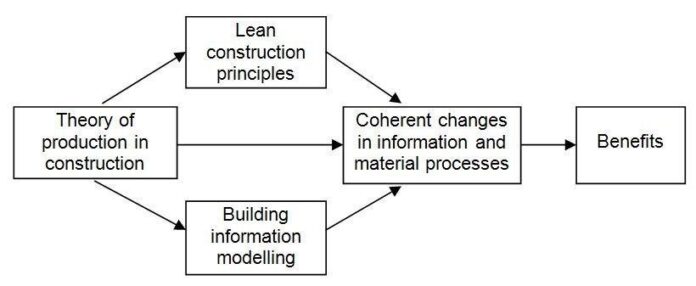The construction industry is constantly seeking ways to improve efficiency, reduce waste, and deliver projects more effectively. Two powerful methodologies – Lean Construction and Building Information Modeling (BIM) – offer significant benefits individually, but their true potential is unlocked when implemented together as LeanBIM. This approach isn’t simply about combining tools; it’s about a fundamental shift in how projects are planned, executed, and managed.
The Synergies Between Lean and BIM
Lean Construction focuses on maximizing value while minimizing waste, streamlining processes, and improving collaboration. BIM, meanwhile, provides a digital representation of a physical asset, enabling detailed design, simulation, and data-driven decision-making. When integrated, BIM’s visualization and data capabilities amplify Lean’s principles. By virtually constructing a project before physical execution, teams can identify and eliminate potential issues early, reducing rework, delays, and cost overruns.
This synergy is particularly evident in Integrated Project Delivery (IPD), a collaborative approach where all stakeholders work together from the outset, sharing risks and rewards. IPD leverages Lean and BIM to optimize efficiency, reduce waste, and deliver superior project outcomes.
What is LeanBIM?
LeanBIM is defined as the strategic implementation of BIM alongside Lean concepts to maximize value generation while minimizing waste and resource consumption. It goes beyond simply using BIM as a 3D modeling tool. It’s about leveraging the information embedded within the model to drive lean processes throughout the entire project lifecycle.
Beyond 3D: The Power of ‘n’ Dimensions
Many misunderstand BIM, focusing solely on its 3D visualization. However, the true power lies in its ability to incorporate multiple dimensions (4D for time, 5D for cost, and beyond). These dimensions aren’t just visual; they represent independent data points that can be analyzed and optimized. For example, 4D scheduling integrates the BIM model with project timelines, while 5D cost estimation links the model to budget data.
The possibilities are endless, and the more dimensions integrated, the more comprehensive the insights. This multi-dimensional capability allows stakeholders from different disciplines to work collaboratively, using a single, unified artifact for simulation, modeling, and predictive analysis.
Why Integrate? The Benefits Are Clear
Integrating Lean and BIM allows teams to virtually construct projects before physical execution, identifying and eliminating potential issues early. This leads to reduced rework, delays, and cost overruns. The data embedded within BIM models can be used for cost estimation, sustainability measurements, and facility management, extending the value beyond construction.
Challenges to Implementation
Despite the clear benefits, implementing LeanBIM isn’t without challenges. A major obstacle is the lack of a collaborative legal framework that supports integrated project delivery. Traditional contractual relationships often hinder the full potential of BIM, preventing seamless data sharing and collaboration.
Another challenge is the initial investment in IT infrastructure and training. Implementing BIM requires upfront costs, but the long-term benefits far outweigh the initial expense. The data stored within BIM models becomes increasingly valuable over time, making the investment worthwhile.
Overcoming Barriers: The Path Forward
To successfully implement LeanBIM, the construction industry must embrace collaborative project delivery systems, such as IPD. Legal frameworks need to be updated to support integrated workflows and incentivize collaboration. Additionally, investments in training and IT infrastructure are crucial to ensure that teams have the skills and tools they need to leverage the full potential of BIM.
By overcoming these barriers, the construction industry can unlock the true power of LeanBIM, driving efficiency, reducing waste, and delivering projects more effectively.
Ultimately, LeanBIM represents a fundamental shift in how construction projects are planned, executed, and managed. By embracing this integrated approach, the industry can unlock new levels of efficiency, reduce waste, and deliver projects that meet the needs of all stakeholders



















































